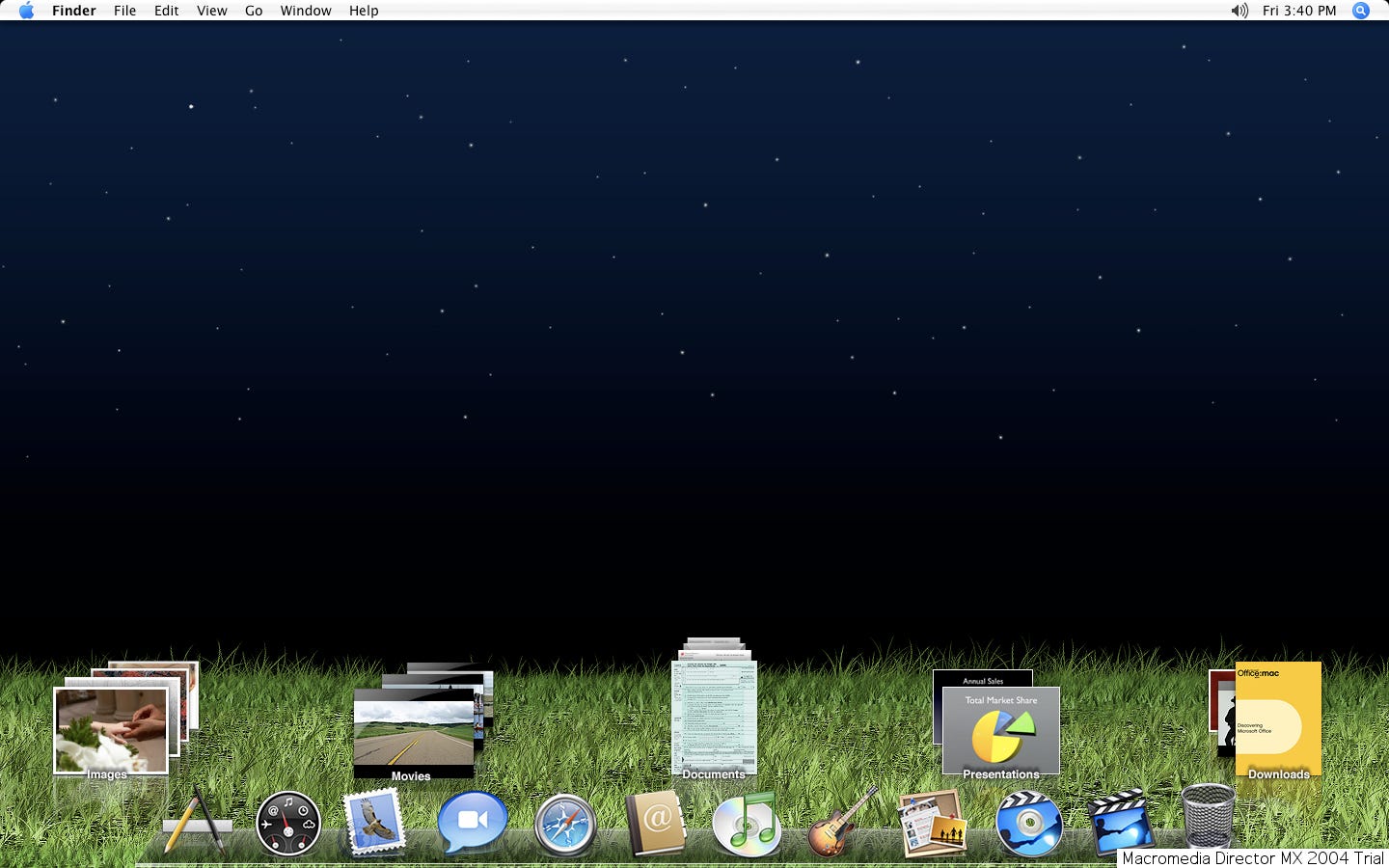Patents are rarely what they seem
I’ll start with my all-time favourite diagram found in a patent.
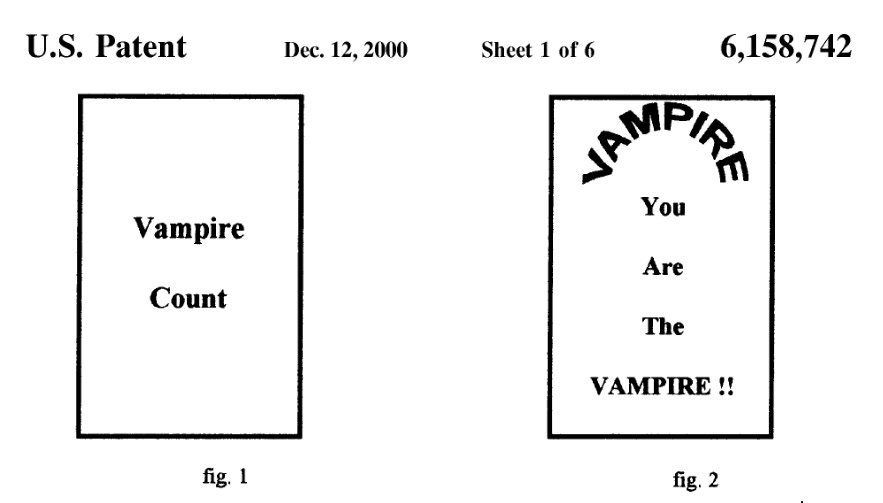
I’ve been involved in a number of patents over the years, but I’ve not written about them before, mostly because the US patent system seems to be more about stifling innovation than encouraging it. And more about funnelling money to lawyers than entrepreneurs. And that’s me trying to be positive about things. In this publication over the years, I’ve also chosen to focus on the grunt work I’ve done and not tout my patent portfolio as an accomplishment in itself.
But the patent process was still quite interesting to be involved with so directly.
Patent filings are among the most inscrutable documents you will ever come across. Often consisting of vague text and odd diagrams, they appear randomly (or so it seems) in various patent databases like Google Patents. All this creates an air of mystery and intrigue.
The patents with interesting diagrams often get posted as news stories, claiming they surely reveal future roadmaps. There is even one site exclusively devoted to unpacking patent news about Apple.
But no one really follows up on these stories. If they did, the truth is that most of the time, nothing ever comes of them. Even if you have a law degree and time on your hands, you’d be hard-pressed to find examples of patents that definitively revealed future products years in advance, which is what Patently Apple sometimes implies.
An example patent
Here’s a patent I’ll use to illustrate some of my later points: US8745535B2 Multi-dimensional desktop. I was involved only as an inventor and don’t have any special insight into the patent process or strategy. Anyone with access to a web browser and unlimited time can honestly deduce anything I mention here.
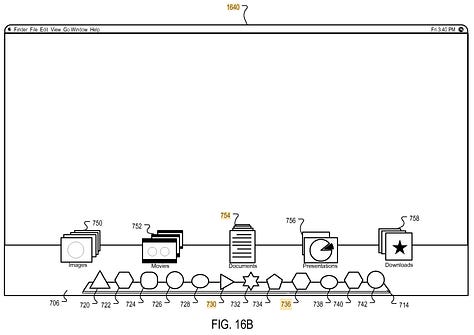
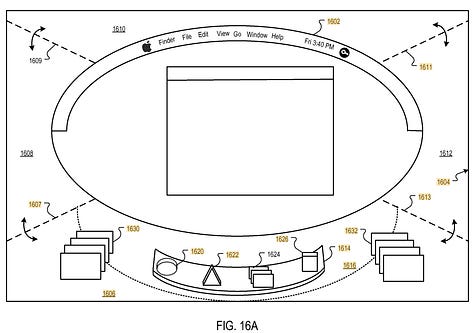
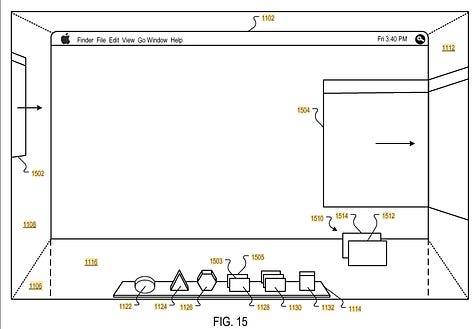
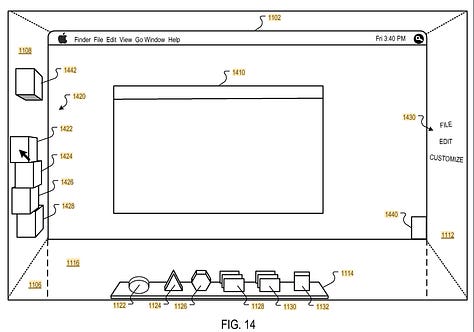
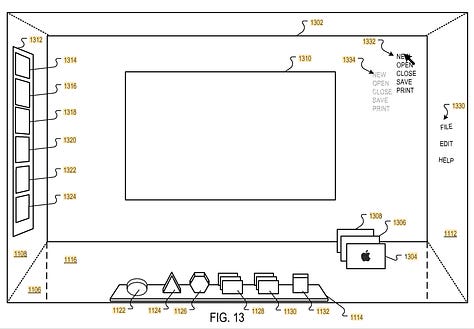


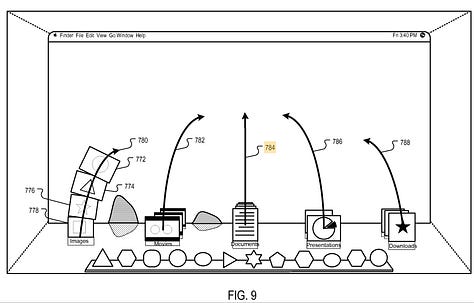
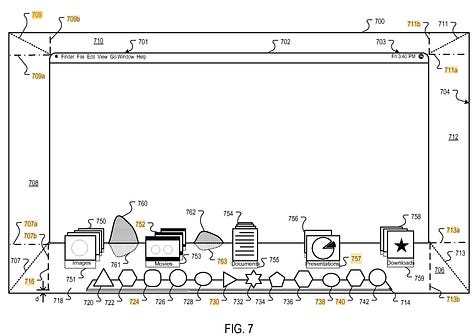
At the time this was filed, this may have seemed to many people as perhaps a window into a future product, but like many patents, that’s quite far from the truth.
What to make of a patent filing
Patents with diagrams definitely add some excitement, but try not to get too excited. Most often, the reasons for patent getting filed are pretty mundane.
Something shipped over a year ago and it needed to be protected
Check out the dates listed in the example patent. It was made public (“published”) on 2008-12-11. It was filed on 2007-06-08, which is eighteen months prior. This is pretty standard. What’s special about 2007-06-08? This was a few days before Apple’s Worldwide Developer Conference, which is generally the coming-out party for new versions of the various operating systems. That year, it was Mac OS X Leopard.
By filing it right as it’s released, the invention gets protected without revealing it ahead of time. If you go back to Google Patents and search for patents filed around the time of major announcements, you’ll find the same thing. For example, here are all the patents filed the month the original iPhone was announced.
Something small and specific in a broader patent actually shipped
Patents are intentionally broad and vague. When filing a patent, there’s a balance between filing too specific a patent and too vague. Too specific, and someone may rip it off by coming up with something that is substantially the same but slightly different enough that it’s considered not to infringe the patent. A patent that is too vague risks not getting granted.
Back to the multi-dimensional desktop patent. It’s fairly broad and ambitious, which led people to miss something important. A small-ish feature known as Dock stacks is buried in this patent, and it did indeed ship. You can see how a patent that seems to be stuff that has never before been seen would cause people to get overly excited. But this patent has something in it that shipped, and it needed protection.
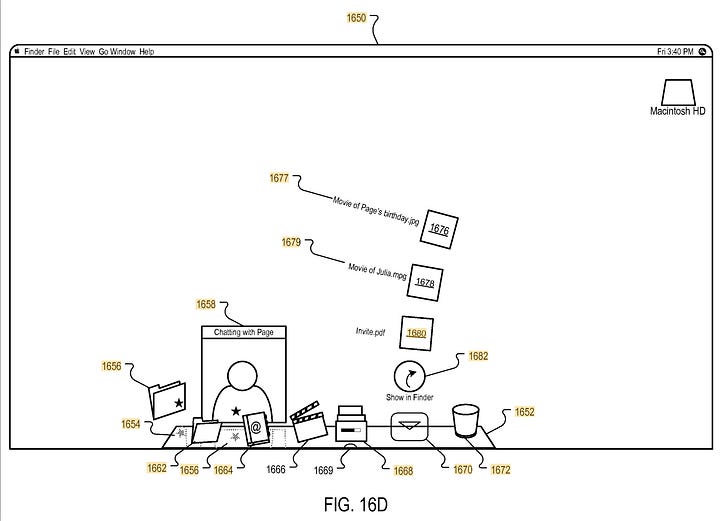
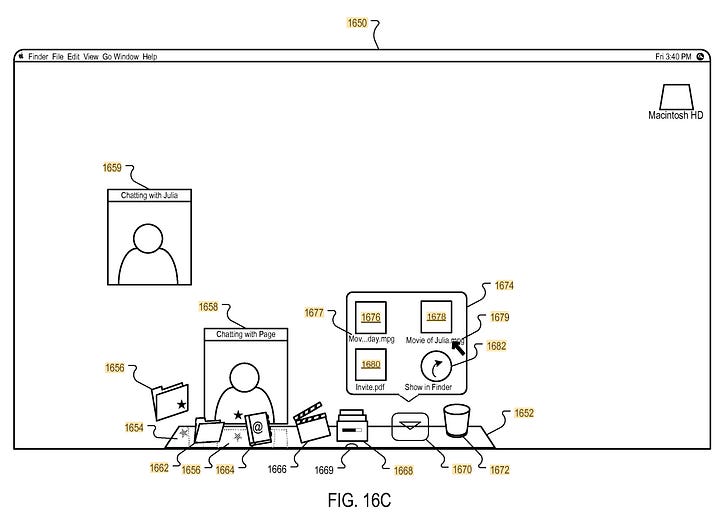
Patents are very often an obituary notice for ideas
If a patent was filed and there’s truly nothing in it that ever shipped, then it’s very likely that nothing in it will ever ship. I don’t have any definitive proof of this, but from observing tech patents over the year, a fair number of them fall into this category.
So, why file a patent? Well, many companies file patents defensively, so that when patent trolls come after them, they have more potential ammunition to fight them off.
So, the notion of an idea graveyard may seem rather depressing, but they provide incredible insight into the thought process of inventors and the companies they work for. And sometimes the world changes and an idea that didn’t work out at the time gets resurrected. For example, the stacks/piles concept in this patent dates back more than a decade before this patent and still lives on today in some form or another.
If they are revealing the future, some deeper analysis will be needed
If you follow patents more closely, you can probably deduce some things and maybe come up with some unique insights into the thought process of a company, especially if you put it in the context of products that have actually shipped. So, what I’m saying is that considering one patent in isolation is probably not going to be a window into the future, but considering a company’s patent portfolio as documentation of a long-term thought process, you may be able to speculate on where a company might be going (or not going) next.
Back to my example patent
Fifteen years after this particular patent was filed, the desktop experience of the Mac has not become three-dimensional, for better or for worse. In fact, it’s even more two-dimensional than it was back then, when there was a lot of effort put into reflections and depth that are now gone.
Looking back, there were some interesting ideas that might have evolved into a rethinking of the desktop experience, but nothing really seemed like a slam dunk. I would have liked to see a few of the ideas live on, but the overall concept seemed like replacing clutter with different clutter.
None of this ever got past the discussion and mockup stage, except for Dock stacks. Here are a few screenshots from a Director file that I kept as mementoes.
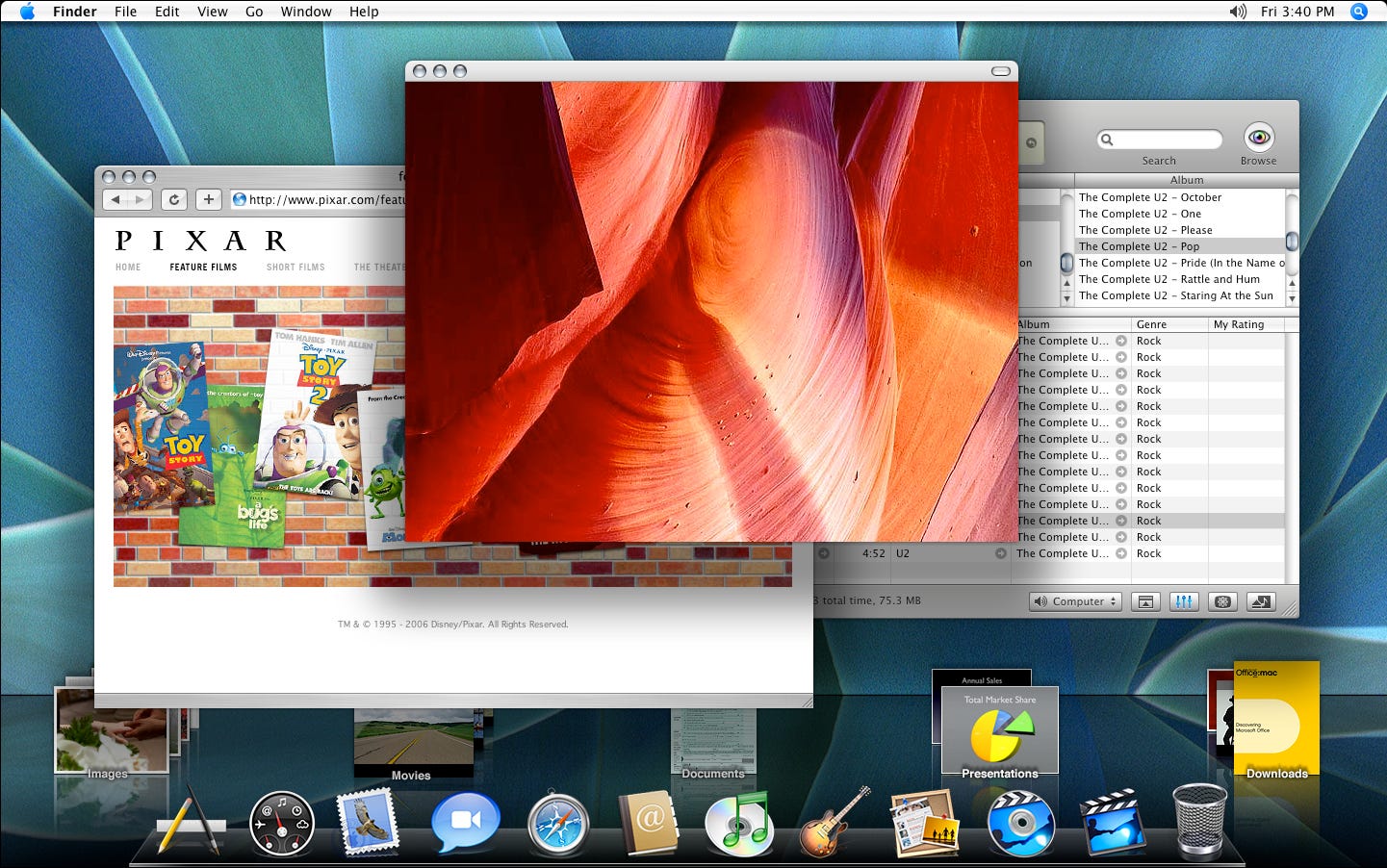
Summary
To me, patents are the past and the present, and may sometimes be the future, but more often they tell a story of the past. For those who really want to dig into the thought process of a company and don’t mind reading boring documents, they can be a historical gold mine.
Having worked at Apple in an era where people didn’t care about the company or, if they did, thought they were most certainly going to be bankrupt within a year, it was heartening to see how passionate people could get over mundane things like patent filings. But I think by not following up on patents, or treating each one as a single news story, people may be prone to jumping to conclusions rather than gaining interesting insight into a company.






